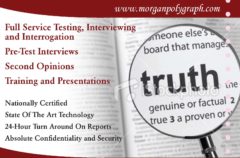
Lie detection is an invaluable skill that empowers you to navigate complex social interactions with confidence. By recognizing subtle cues and understanding the psychology behind deception, you can enhance your ability to discern truth from falsehood. This guide will provide you with imperative steps to develop your lie detection capabilities, helping you identify dangerous deception and making informed decisions in both personal and professional contexts. Equip yourself with the tools to unveil the hidden truths in everyday communications.
Key Takeaways:
- Observation Skills: Developing keen observation skills is crucial for spotting inconsistencies in behavior and speech that may indicate deception.
- Understanding Context: Contextual analysis plays a vital role in lie detection, as understanding the background and circumstances can help differentiate between truth and falsehood.
- Nonverbal Cues: Recognizing nonverbal signals, such as body language and facial expressions, can provide significant insights into whether someone is being truthful or deceptive.

Understanding Deception
The essence of deception lies in the art of manipulation, where individuals often hide their true intentions or emotions. Recognizing deception is necessary, as it can affect personal and professional relationships. By grasping the various forms and motivations behind lying, you can become more adept at detecting untruths. Understanding that people may lie for reasons ranging from self-preservation to social acceptance equips you with the knowledge necessary for effective lie detection.
The Psychology of Lying
Against popular belief, lying isn’t merely about fabrication; it’s a complex psychological process. People lie for various reasons, including fear, shame, or the desire for approval. Understanding the motivations for lying is key to recognizing when someone may not be truthful. This psychological insight helps you anticipate possible deceitful behaviors and navigate conversations more effectively.
Common Signs of Deceit
Any keen observer can spot signs of deceit in individuals. While there’s no definitive checklist, certain behaviors often indicate untruthfulness. These may include inconsistent stories, evasive body language, or changes in vocal tone. You should be aware of these signs as they can provide valuable context during interactions.
Further exploring common signs of deceit reveals that nonverbal cues, such as avoiding eye contact or fidgeting, can signal discomfort or dishonesty. Additionally, inconsistencies in the narrative or an overly elaborate explanation may raise red flags. Be mindful of your intuition, as a gut feeling about someone’s honesty can often guide you toward the truth. Understanding these signs enhances your ability to detect lies and fosters more authentic communication.

The Science of Lie Detection
Now, understanding the science behind lie detection is vital for effective training. The field encompasses various methodologies that help identify Deception Detection | How to Tell If Someone is Lying. From psychological theories to neurobiological studies, the mechanisms of deceit reveal patterns in human behavior that can be harnessed for lie detection.
Physiological Responses
One aspect of detecting lies involves monitoring physiological responses. These include changes in heart rate, sweat production, and breathing patterns that may indicate stress or anxiety, often linked to deceitful behavior.
Behavioral Indicators
For effective lie detection, you also need to pay attention to behavioral indicators. These can encompass a range of non-verbal cues such as eye contact, body language, and the consistency between verbal statements and physical actions.
Consequently, being attuned to these behavioral indicators can significantly enhance your ability to detect lies. For example, a liar may avoid eye contact or exhibit fidgeting behaviors that suggest discomfort. Additionally, discrepancies between what a person says and how they act may reveal underlying deception. Observing these nuanced behaviors not only helps in identifying dishonesty but also empowers you to respond strategically in conversations.
Techniques for Effective Lie Detection
Once again, mastering lie detection requires you to employ various techniques that enhance your perception of truthfulness. By utilizing appropriate methods, you can improve your ability to discern deception in individuals. For a deeper understanding of these strategies, refer to this resource on training law enforcement officers to detect deception: a critique.
Verbal Communication Analysis
Beside focusing on body language, analyzing verbal communication is vital in lie detection. Changes in tone, inconsistencies in stories, and avoidance of direct answers often signal deceit. By tuning into these verbal nuances, you can gain valuable insights into the truthfulness of someone’s statements.
Non-Verbal Cues and Body Language
Across various scenarios, non-verbal cues can significantly impact your ability to detect lies. Subtle facial expressions, hand gestures, and overall body posture often reveal more than words alone. Observing these indicators can help you uncover concealed intentions.
In fact, non-verbal communication is instrumental in lie detection. Strong facial expressions may betray emotions that contradict spoken words, while fidgeting or shifting weight can suggest nervousness. Similarly, a lack of eye contact often indicates discomfort or dishonesty. By carefully observing these body language signals, you can enhance your skills in identifying deception, empowering your judgement in conversations.
Practical Applications in Various Fields
All professionals can leverage lie detection techniques to enhance their effectiveness and decision-making capabilities. Whether you are in law enforcement, business, or negotiation, Training – Pamela Meyer offers valuable resources to refine your skills and apply them in real-world scenarios.
Law Enforcement Strategies
An effective approach to lie detection in law enforcement involves keen observation and understanding of human behavior. By incorporating tools and techniques, you can enhance your interrogation skills and gain insights that lead to more accurate assessments of honesty in suspects.
Corporate Uses in Interviews
Alongside traditional interviewing techniques, lie detection can significantly improve your hiring process. By integrating body language analysis and verbal cues, you can evaluate candidates more effectively and reduce the chances of hiring individuals with ulterior motives.
Strategies for implementing lie detection in corporate interviews involve focusing on non-verbal signals and assessing inconsistencies in a candidate’s responses. Being aware of distractors such as nervous habits can help you identify individuals who may not be forthcoming. Additionally, utilizing a structured interview process allows you to probe deeper into red flags while maintaining the integrity of the interview. These practices can lead to a more discerning hiring process and ultimately foster a healthier workplace environment.
Challenges in Lie Detection
Many experts in lie detection face numerous challenges that impede their ability to accurately discern truth from deception. These challenges arise from a combination of subjective interpretations, cultural differences, and the evolving nature of human behaviors. As you navigate this complex field, it’s crucial to understand these obstacles to enhance your efficacy and accuracy in lie detection training.
Misinterpretation of Signals
One key issue in lie detection is the potential for misinterpretation of signals. Nonverbal cues, such as facial expressions or body language, can vary significantly across individuals and cultures. Without a comprehensive understanding of these nuances, you may inadvertently draw incorrect conclusions based on misleading signals.
Ethical Considerations
After examining the challenges, it’s important to address the ethical considerations in lie detection. Your approach must account for the potential consequences of falsely accusing someone of deception, which can have significant repercussions on their personal and professional life.
Ethical implications can be profound in lie detection as you deal with sensitive information and interpersonal relationships. This responsibility requires you to approach each situation with caution, ensuring fairness and respect for all parties involved. Misuse of lie detection techniques could lead to damaging reputations or unjust consequences. Therefore, prioritizing integrity in your evaluations is vital to maintain trust and credibility in your assessments, while also considering the broader impact your findings may have on people’s lives.
Training Approaches and Resources
Not all lie detection training methods yield the same results, so it’s crucial to explore various approaches to find what works best for you. Incorporating both theory and practical exercises can enhance your understanding of deception detection. By integrating multiple training resources and styles, you can sharpen your skills and develop a more nuanced perspective on lie identification.
Workshops and Seminars
About attending workshops and seminars can be an effective way to deepen your knowledge of lie detection. These interactive events often provide hands-on experience, expert guidance, and the opportunity to engage with fellow participants. By learning in a group setting, you can share insights and real-world applications that enrich your understanding of deception cues.
Recommended Reading and Tools
The various books, articles, and tools available on this subject can help expand your learning beyond formal training. You can find valuable resources that explore into the psychology of lying and the behavioral indicators associated with deception.
For instance, exploring titles like “The Definitive Book of Body Language” or “Lie Spotting” can provide you with a comprehensive understanding of nonverbal cues and the psychological underpinnings of deceit. Utilizing software for lie detection analysis can also enhance your skills, offering tools to observe, record, and analyze verbal and nonverbal communication. By combining theoretical knowledge with practical tools, you can significantly improve your proficiency in detecting lies and uncovering the truth in various situations.
To wrap up
Hence, mastering the art of lie detection is an invaluable skill that can enhance your personal and professional interactions. By understanding the necessary steps outlined in lie detection training, you empower yourself to read nonverbal cues, recognize verbal inconsistencies, and analyze behavioral patterns. This knowledge not only aids you in assessing honesty but also strengthens your overall communication skills. With practice and awareness, you can refine your ability to discern the truth, ultimately fostering trust in your relationships.
FAQ
Q: What is ‘Decoding Deception – Essential Steps In Lie Detection Training’ about?
A: ‘Decoding Deception’ is a comprehensive training program focused on understanding the nuances of human behavior and detecting deception effectively. The training covers crucial techniques, including nonverbal cues, verbal indicators, and context analysis. Participants learn to identify signs of lying by studying patterns and behavioral inconsistencies, which can be applied in various fields such as law enforcement, security, negotiation, and everyday interactions.
Q: Who can benefit from lie detection training?
A: Lie detection training is beneficial for a broad audience, including professionals in law enforcement, security personnel, negotiators, therapists, managers, and educators. Anyone who interacts with people regularly and seeks to improve their communication skills and understanding of human behavior can gain valuable insights from this training. By enhancing observation and analytical skills, participants can better navigate personal and professional interactions.
Q: What skills will participants develop in this training program?
A: Participants of ‘Decoding Deception’ will develop a variety of skills crucial for effective lie detection. These include advanced observational skills to recognize body language and micro-expressions, the ability to analyze tone and speech patterns for inconsistencies, and techniques for creating a conducive environment for open communication. Furthermore, the training emphasizes critical thinking and situational awareness, enabling participants to assess the context surrounding interactions more proficiently.
